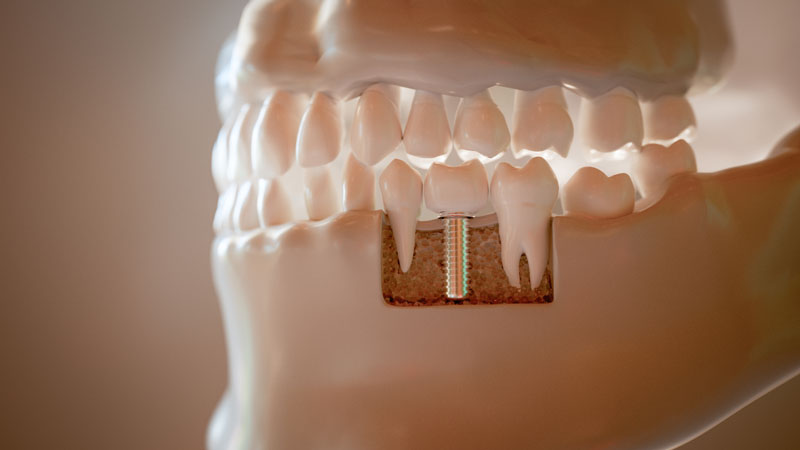blog - [City], [state]
Tips, Facts, And The
Latest In Dentistry

How Safe Is A Tooth Implant? The Expert 2025 Guide
Posted in Dental Implants

Wondering how safe is tooth implant? This guide answers that question directly and simply. You’ll learn how implants work, common risks, long‑term success rates, and clear steps you can take to lower your chance of problems.
Read on for practical information to help you decide if a tooth implant is right for you and what to expect before, during, and after treatment.
What a tooth implant is and how it works
The parts of an implant
A dental implant replaces a missing tooth with three main parts:
- Implant body (fixture) — a titanium screw placed into the jawbone that acts like a tooth root.
- Abutment — a small connector attached to the implant body that holds the visible part of the tooth.
- Crown — the replacement tooth made of ceramic or porcelain that looks like a natural tooth.
Typical procedure timeline
Most implant treatments follow a few clear steps:
- Consultation and medical review, including oral exam and X‑rays or a CBCT scan.
- Implant placement surgery — the implant is set into the jawbone.
- Healing period (osseointegration), usually several weeks to a few months while bone bonds to the implant.
- Abutment placement and final crown fitting once the implant is stable.
How safe is tooth implant: common risks and complications
Short‑term risks
Short‑term problems are common after any oral surgery but are usually temporary and manageable:
- Pain and swelling — controlled with pain medicine, ice, and rest.
- Minor bleeding — usually stops within 24 hours with simple care.
- Infection — prevented with good hygiene and sometimes antibiotics; early treatment clears most infections.
Less common but serious issues
More serious complications happen less often but are important to know:
- Nerve injury — can cause numbness or tingling in the lip, cheek, or tongue. Often temporary but can be permanent in rare cases.
- Sinus perforation — upper jaw implants may enter the sinus if bone is thin; usually fixable with surgery.
- Implant failure — the implant may not integrate with bone or might loosen later; this can often be treated by replacing the implant after healing.
Who is at higher risk
Certain conditions raise the chance of complications:
- Smoking or vaping
- Uncontrolled diabetes or other immune problems
- Poor oral hygiene or active gum disease
- Low bone density or heavy bite forces
- Some medications (e.g., certain bone medicines)
Success rates and long‑term safety evidence
What outcomes studies show
Implants have strong long‑term success in healthy patients. Many studies report success rates above 90–95% over 10 years for single implants in good conditions. With proper planning and care, implants often last decades.
Factors that affect long‑term survival
Key factors that influence how long an implant lasts include:
- Bone quality and amount where the implant is placed
- How well you care for your mouth (brushing, flossing, cleaning around implants)
- Regular dental checkups and professional cleanings
- Your bite forces and whether you grind or clench your teeth
How to make tooth implants safer for you
Pre‑treatment steps
Preparing well lowers risk. Typical steps include a full medical review, 3D imaging (CBCT) to check bone, treating any gum disease first, and quitting smoking before and after surgery. Your dentist may recommend bone grafting if jawbone is too thin.
Choose the right provider
Experience and training matter. Look for a dentist or oral surgeon with implant training, good case photos, and a clear treatment plan. Ask about the technology they use (like 3D imaging and guided surgery). If you want, speak with our dental team to review your options and get a personalized plan.
Aftercare and follow‑up
After surgery, follow these steps to reduce problems:
- Keep the area clean with gentle brushing and salt rinses as advised.
- Take medications and antibiotics as prescribed.
- Watch for signs of trouble (increasing pain, swelling, fever, numbness, or loose parts) and call your dentist promptly.
- Keep regular checkups and cleanings to monitor bone and gum health around the implant.
Questions to ask your dentist
- What are my specific risks and how likely are they?
- Do you have experience with implants like mine?
- What imaging and planning will you use?
- What are the alternatives and their risks?
- What will the total cost and timeline look like?
Conclusion
So, how safe is tooth implant? For most healthy people, implants are a safe, predictable way to replace missing teeth with high long‑term success. Risks exist but can be minimized with good planning, a skilled provider, and proper aftercare. If you’re thinking about implants, schedule an exam to review your health, bone, and options — and get answers tailored to your situation.





